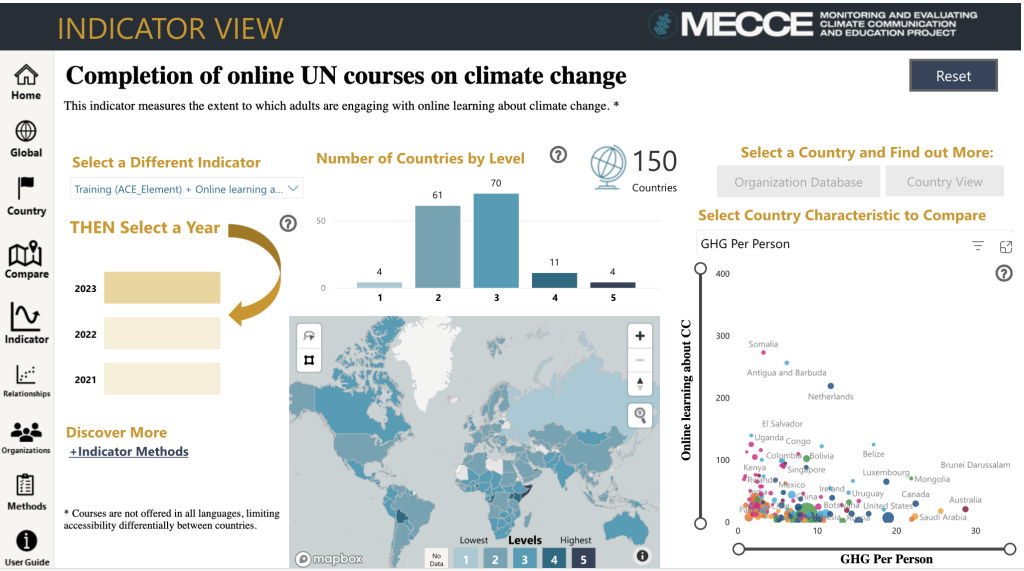UN CC:Learn and the Monitoring and Evaluating Climate Communication and Education Project (MECCE) are shedding light on the state of online climate change learning among adults worldwide.
Building on a collaboration that was established in 2022, UN CC:Learn and the MECCE Project, an international research initiative bringing together over 100 leading scholars and agencies hosted by the University of Saskatchewan, have developed a new global indicator that gives a proxy measure of the engagement of adults in online learning about climate change.
This new indicator is available on the MECCE Project data platform and can be combined with other indicators there to analyze how the completion of UN CC:Learn courses is contributing to advancing climate learning worldwide.
The MECCE Project used the number of UN CC:Learn courses completed from 2020 to 2023 by type of course and country, as well as external data such as the number of adults with internet connection by country, to come up with a five-level indicator, with 1 being the lowest and 5 highest.
The indicator has demonstrated that UN CC:Learn courses have comprehensive global coverage (77%) and that, over the years, online climate change learning through the completion of UN CC:Learn courses among adults has ramped up in more countries, especially developing ones. These countries are ranking higher on the indicator’s scale. In 2023, for instance, 70 countries were at level three in comparison with 56 in 2022. Similarly, now 11 countries are at level four and 4 at level five, in comparison with 5 and 1, respectively, a year before.
In addition to the indicators, the MECCE Project provides insights into the state of climate change education in countries through 80 country profiles. Several UN CC:Learn Partner countries are featured there and users can explore a comprehensive overview of the country’s climate change strategies and policies over the years, divided into several key sections.
Moving forward, UN CC:Learn and the MECCE project will keep collaborating to see how the indicator evolves in the future.

